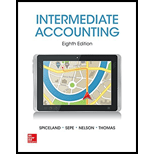
(1)
Derivatives: Derivatives are some financial instruments which are meant for managing risk and safeguard the risk created by other financial instruments. These financial instruments derive the values from the future value of underlying security or index. Some examples of derivatives are forward contracts, interest rate swaps, futures, and options.
Interest rate swap: This is a type of derivative used by two parties under a contract to exchange the consequences (net cash difference between interest payments) of fixed interest rate for floating interest rate, or vice versa, without exchanging the principal or notional amounts.
The net cash settlement as at December 31, 2016, 2017, and 2018
(2)
Debit and credit rules:
- Debit an increase in asset account, increase in expense account, decrease in liability account, and decrease in
stockholders’ equity accounts. - Credit decrease in asset account, increase in revenue account, increase in liability account, and increase in stockholders’ equity accounts.
To journalize: The entries of issue of note, interest payments, and
(3)
To journalize: The entries of issue of note, interest payments, and adjustment entries to reflect fair value during 2017
(4)
To journalize: The entries of issue of note, interest payments, and adjustment entries to reflect fair value during 2018.
(5)
The book values of interest rate swap and note in 2016, 2017, and 2018.
(6)
The net effect of fair value hedge on earnings for the years 2016, 2017, and 2018.
(7)
To journalize: The entries of issue of note, interest payments, and adjustment entries to reflect fair value during 2016, if fair value would have been $97,000 rather than $98,241.
Want to see the full answer?
Check out a sample textbook solution
Chapter A Solutions
INTERMEDIATE ACCOUNTING W/CONNECT PLUS
- Internal controls are the rules and procedures that a company develops and implements. These controls help to maintain the accountability and integrity of the accounting information as well as help to prevent fraud. There are many objectives of a well-designed internal control structure in an organization. These include having a controlled environment, assessing risks, and monitoring. An example of a control that I personally use would be in our register system. Every night, the evening cook/helper counts down the cash register drawer and lets me know how much cash was in the drawer over the amount that we leave in it every night of $125. The next morning, I compare the information from the cash register balance sheet to the computer system to ensure all numbers match up. These numbers are then recorded daily into a monthly spreadsheet that we ensure balances at the end of the month. Respond to ally's postarrow_forwardPlease give me correct answer this financial accounting questionarrow_forwardInternal control in a business organization and the reporting of cash on the balance sheet as well as managing receivables and estimating uncollectible accounts is important. What is internal control, and what are the objectives of a well-designed internal control structure in an organization?arrow_forward

 AccountingAccountingISBN:9781337272094Author:WARREN, Carl S., Reeve, James M., Duchac, Jonathan E.Publisher:Cengage Learning,
AccountingAccountingISBN:9781337272094Author:WARREN, Carl S., Reeve, James M., Duchac, Jonathan E.Publisher:Cengage Learning, Accounting Information SystemsAccountingISBN:9781337619202Author:Hall, James A.Publisher:Cengage Learning,
Accounting Information SystemsAccountingISBN:9781337619202Author:Hall, James A.Publisher:Cengage Learning, Horngren's Cost Accounting: A Managerial Emphasis...AccountingISBN:9780134475585Author:Srikant M. Datar, Madhav V. RajanPublisher:PEARSON
Horngren's Cost Accounting: A Managerial Emphasis...AccountingISBN:9780134475585Author:Srikant M. Datar, Madhav V. RajanPublisher:PEARSON Intermediate AccountingAccountingISBN:9781259722660Author:J. David Spiceland, Mark W. Nelson, Wayne M ThomasPublisher:McGraw-Hill Education
Intermediate AccountingAccountingISBN:9781259722660Author:J. David Spiceland, Mark W. Nelson, Wayne M ThomasPublisher:McGraw-Hill Education Financial and Managerial AccountingAccountingISBN:9781259726705Author:John J Wild, Ken W. Shaw, Barbara Chiappetta Fundamental Accounting PrinciplesPublisher:McGraw-Hill Education
Financial and Managerial AccountingAccountingISBN:9781259726705Author:John J Wild, Ken W. Shaw, Barbara Chiappetta Fundamental Accounting PrinciplesPublisher:McGraw-Hill Education





